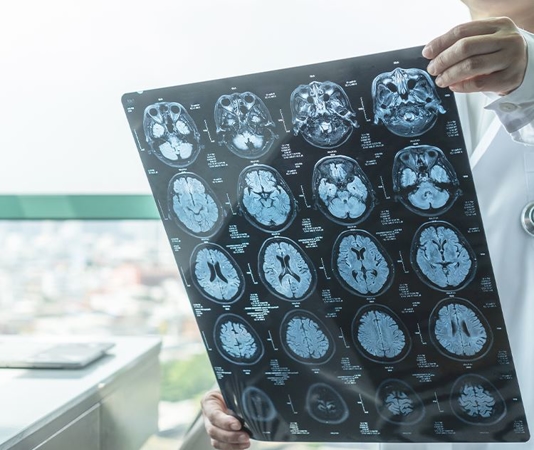People who have experienced traumatic brain injury (TBI) may continue to experience emotional and cognitive problems even after the initial recovery from injury. Experts have identified a significant association between TBI and post-traumatic stress disorder (PTSD), given that TBI may occur during an event that is also emotionally traumatic, such as a vehicle accident or physical assault. Many chronic symptoms of TBI—such as emotional dysregulation, memory impairment, and cognitive difficulties—overlap with those common in PTSD. Emerging evidence recent studies has suggested that PTSD may have a larger influence on the neurobehavioral outcomes of TBI than the injury itself.
Concurrent TBI and PTSD is highly prevalent among military service members—an estimated 33 to 39% of veterans with a history of TBI also have PTSD. In general, veterans with both TBI and PTSD also tend to score lower on measures of quality of life, which may be attributed to physical and emotional limitations, fatigue, and poorer overall functioning in everyday life. While more common in military personnel, the overlap of TBI and PTSD is also detrimental among civilians.
A team of researchers recently conducted a study using medical records of 1,301 United States military servicemembers, both with and without TBI, to compare different demographic, injury, and healthcare factors in the prevalence of PTSD. The researchers identified seven conditions associated with the risk of PTSD: pre-injury IQ; combat exposure; depression; social participation; history of mTBI; and the clinical need for managing mood, stress, memory, and attention.
Navigating the rehabilitation of TBI is a challenging undertaking, and the addition of comorbid PTSD further complicates recovery. As current neuropsychology research regarding the connections between PTSD and TBI emerges, it is important to be aware of current findings and their clinical implications.
What is known about the neurological mechanisms connecting PTSD to TBI?
- PTSD and TBI share a neural connectivity profile. A recent study published data from brain scans of individuals with PTSD and TBI, showing reduced connectivity and increased connectivity in the same regions compared to healthy controls. This may account for the large overlap in symptomatology between TBI and PTSD.
- Anxiety and emotional dysregulation are common in TBI and PTSD. Anxiety and emotional dysregulation are common symptoms of both TBI and PTSD, and further analysis in the brain-mapping study suggests that this commonality may be caused by reduced connectivity in the brain’s control networks.
- Poor executive functioning is associated with lower quality of life. Another recent study found that individuals with PTSD and TBI had lower quality of life scores when their initial executive functioning was poor. (Executive functioning refers to several higher-order cognitive processes, including planning and memory.) This study indicates a possible need for PTSD and TBI treatment focused on techniques used to improve executive functioning in individuals with both conditions.
Which risk factors are the most prevalent for predicting PTSD following TBI?
- Lack of social participation. Individuals with PTSD may tend to isolate themselves socially, and a lack of social participation was strongly associated with persistent PTSD symptoms over time. Thus, individuals with PTSD symptoms after a TBI may benefit from engagement in programs that provide social support networks through organizations, peers, and their community.
- History of mild TBI. Individuals who had previously experienced mild TBI are at higher risk developing persistent PTSD symptoms after a subsequent TBI. This may be related to treatment plans for the first injury focusing solely on TBI recovery (overlooking treatment for PTSD). Researchers and clinicians should be encouraged to examine the disparities between TBI and PTSD treatments, and to consider more holistic therapeutic approaches.
References:
Lange R, French L, Lippa S, et al. Risk factors for the presence and persistence of posttraumatic stress symptoms following traumatic brain injury in U.S. service members and veterans. Journal of Traumatic Stress. (October 2022).
Klimova A, Breukelaar I, Bryant R, et al. A comparison of the functional connectome in mild traumatic brain injury and post-traumatic stress disorder. Human Brain Mapping. (October 2022).
Crocker LD, Sullan M, Jurick S, et al. Baseline executive functioning moderates treatment-related changes in quality of life in veterans with posttraumatic stress disorder and comorbid traumatic brain injury. Journal of Traumatic Stress. (October 2022).

